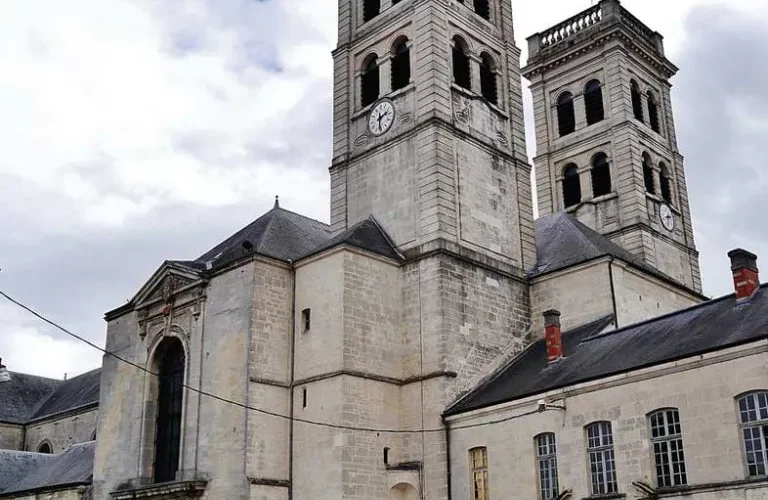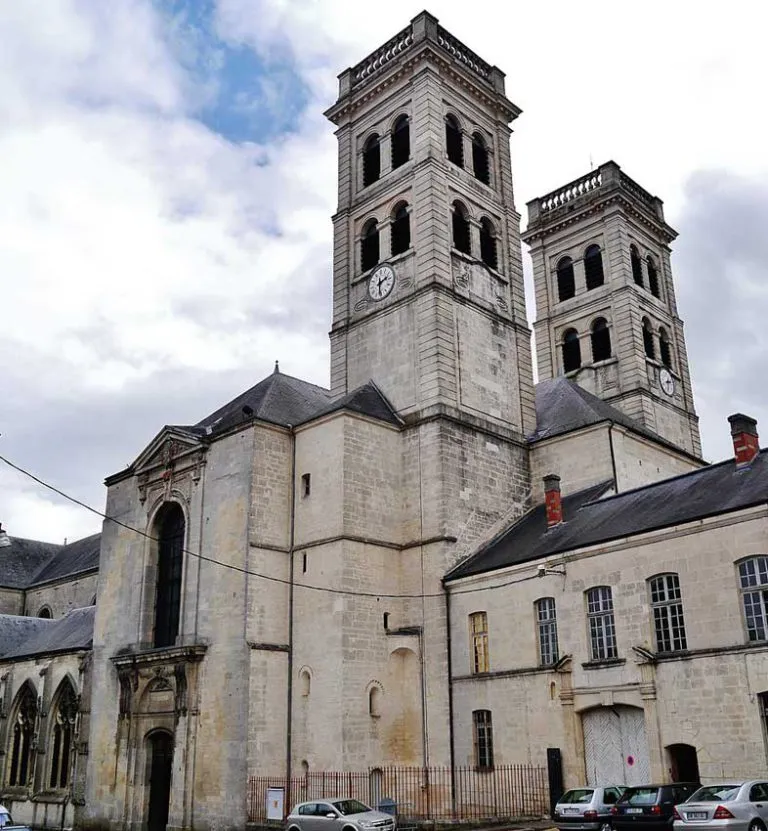
Introduction
Cathedral of Our Lady of Verdun (Notre-Dame de Verdun Cathedral) is a Roman Catholic cathedral located in Verdun, in the French department of Meuse, in Lorraine, in the Grand Est administrative region. Episcopal seat of the diocese of Verdun, it was elevated to the dignity of a basilica by Pope Pius XII in 1947. His episcopal father was named Jean-Baptiste Léon Marie Leclerc. It has a view of the Verdun cemetery, the Meuse and the Lac de la Hulpe.
The cathedral, dedicated to the Virgin Mary, was built from 990 according to the Romanesque-Rhenish plan. It is therefore the oldest in Lorraine and one of the oldest in Europe. It suffered several ravages in the 11th and 12th centuries leading to the reconstruction of certain parts and the addition of others. November 11, 1147, Pope Eugene III consecrated the cathedral.
From the 14th to the 16th century, the building was modified according to the Gothic style. After a fire in 1755 which caused it to lose two of its four bell towers, the cathedral was remodelled in the Baroque and Rocaille styles. Severely damaged by bombardments during the First World War, it was once again restored.
The cathedral has been listed as a historical monument since October 30, 1906, and the cloister from July 13, 1907. It also contains many objects registered or classified as historical monuments.
History of Cathédrale Notre-Dame de Verdun, Lorraine
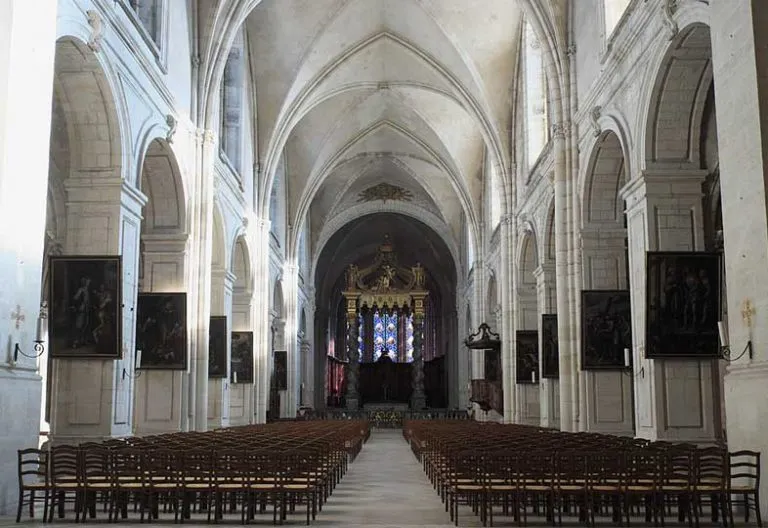
At the beginning of the 4th century, Verdun was evangelized by Saint Saintin who had the first church dedicated to Saint-Pierre and Saint-Paul built on Mont Saint-Vanne. The city became the seat of the bishopric of Verdun and Saint Saintin, its first bishop. The church will be replaced in the 10th century by the Abbey of Saint-Vanne de Verdun.
In the 5th century, after the Barbarian invasions, Saint Pulchrone installed the cathedral in the shelter of the Roman castrum, in its current location. The cathedral is dedicated to the Virgin Mary.
At the end of the 10th century, Bishop Haymon decided to endow his diocese with a large cathedral. From 990 to 1024, he built a new building according to the Romanesque-Rhenish plan: a nave, two transepts, two opposite apses, each flanked by two bell towers. The pillars are square and the roof is frame.
In 1047, a first fire destroyed the religious building. Bishops Richard I and Thierry had to restore it: reconstruction of the upper parts of the nave and the transept, and creation of the portal of the Officiality, to the northwest of the building.
In the 12th century, after the cathedral had been damaged by Renaud I, Count of Bar, Bishop Albéron de Chiny ordered new work. From 1136 to 1160, the architect Garin built the eastern choir which ends in a seven-sided apse with buttresses. He also built the two Saint John and Lion portals, a cloister as well as a hall crypt and two side crypts serving as access.
November 11, 1147, Pope Eugene III, a refugee in France since March 9, 1147, consecrates the cathedral of Verdun, in the presence of 18 cardinals. A stained glass window by master glassmaker Jean-Jacques Grüber located in the western transept depicts this event.
In the 14th century, the cathedral was modified by the architect Pierre Perrat according to the Gothic style. He added vaults to the nave and the aisles, built side chapels, enhanced the eastern apse, opened large windows, capped the towers with arrows, and embellished stained glass windows and frescoes. From the 15th to the 16th century, several chapels were built and the cloister was rebuilt in the flamboyant Gothic style.
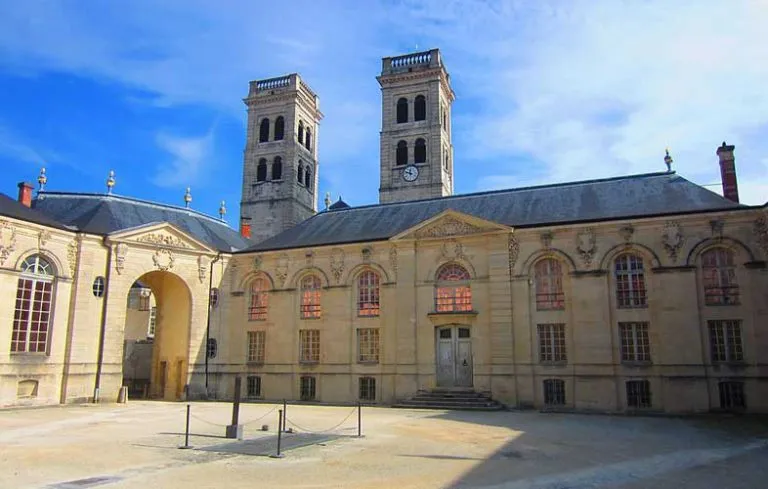
Modern Era
On April 2, 1755, the cathedral was severely damaged by lightning, which set the roof and towers on fire. Bishop Aymar-Chrétien-François de Nicolaï and Canon Chaligny de Plaine had the building rebuilt in the Baroque and rocaille style. Two of the four towers are not rebuilt, wooden stalls are laid and large organs are mounted. A canopy similar to that of St. Peter’s Basilica in Rome is installed at the intersection of the transept and the eastern choir. In addition, the crypts, the Lion’s portal and the Venetian galleries are filled.

Contemporary Period
The Cathedral is listed as a historical monument on October 30, 1906 and the cloister July 13, 1907.
During World War I, and more specifically the 1916 Battle of Verdun, the cathedral was damaged by bombardment. Located high up, it was targeted by German artillery. One meter of rubble strewn on the ground due to the collapse of the roof and the partial destruction of the towers and the cloister. The cathedral, however, remains an observation post over the Meuse valley as well as a place where the hairy garrisoned.
After the war, restoration work carried out by Ventre and Delangle took place from 1919 to 1935. The destroyed parts were rebuilt and the elements concealed in the 18th century were highlighted. Master glassmaker Jean-Jacques Grüber is redoing the stained glass windows by evacuating the rubble, the 12th century crypt was rediscovered by the inhabitants of Verdun. The two restorers decided to restore its original appearance. In 1935, the sculptor Gaston Le Bourgeois made the capitals of the 13 pillars of the crypt. The sculptures represent scenes from the religious life of the city and the Battle of Verdun.
November 10, 1935, the high altar and the crypt are in turn consecrated. July 2, 1946, the statue of Our Lady is crowned by Bishop Angelo Roncalli, future Pope John XXIII. Pope Pius XII raises the cathedral to the dignity of a minor basilica by an apostolic brief of September 8, 1947, year of the 9th centenary of the dedication of the building.

Architecture
Notre-Dame de Verdun cathedral is the oldest cathedral in Lorraine, even in France, and one of the oldest in Europe. Built in the 10th century according to a Romanesque-Rhenish plan, mixing Romanesque and Ottonian architecture, it has survived the ages and today brings together many architectural styles: Romanesque, Gothic, Baroque and rockery.
The cathedral contains 43 objects registered or classified as historical monuments, such as vestments (chapes, stoles), liturgical objects (chalices, ciboriums, monstrances, shuttles), statues, reliquaries or the organ.

Exteriors - Facades, Bell Towers and Gates
The Cathedral has two bell towers. It is attached to the former episcopal palace of the city, now home to the world center for peace.
The Lion’s Gate was built in the 12th century by the architect Garin, at the foot of the northeast tower, which has now disappeared. It was walled up after the fire of 1755, and was only rediscovered in 1916 thanks to German artillery bombardments. The name is due to the presence of a stone lion in front of the gate, later transferred to the Musée de la Princerie.
The tympanum depicts Christ in glory surrounded by the four Evangelists represented in the form of the tetramorph: the lion for Mark, the bull for Luke, the angel for Matthew and the eagle for John. Above the portal, there is a large semi-circular arched niche with a flat bottom, then a small gallery whose cornice, impost and small columns are decorated with plant motifs.
The Saint-Jean portal was built in the 12th century by the architect Garin, at the foot of the southeast tower, which no longer exists. It takes its name from the fact that it gave access to the Saint-Jean baptistery. It was locked up in the 13th century because of the construction of the Sacraire’s room. The fresco in the tympanum depicted the Presentation of Jesus in the Temple and the arches were decorated with heads, billets and plant motifs. Today, there are only a few traces of this polychrome decoration.
Cloister
The Flamboyant Gothic style cloister has a total development of 87 meters. Its three galleries provide access to the chapter’s dependencies. The clerestory of the eastern gallery dates from the 14th century, while the rest of the cloister was built from 1509 to 1517. The cloister is listed as a historic monument on July 13, 1907.
The cloister houses four 12th century statues. They represent Adam and Eve, the Annunciation, Cain and Abel, and a bishop who would be Saint Saintin. Originally, they adorned the buttresses of the eastern apse of the cathedral. Very deteriorated, they were sheltered, restored and then installed in the cloister.
Interiors - Choirs, Nave and Chapels
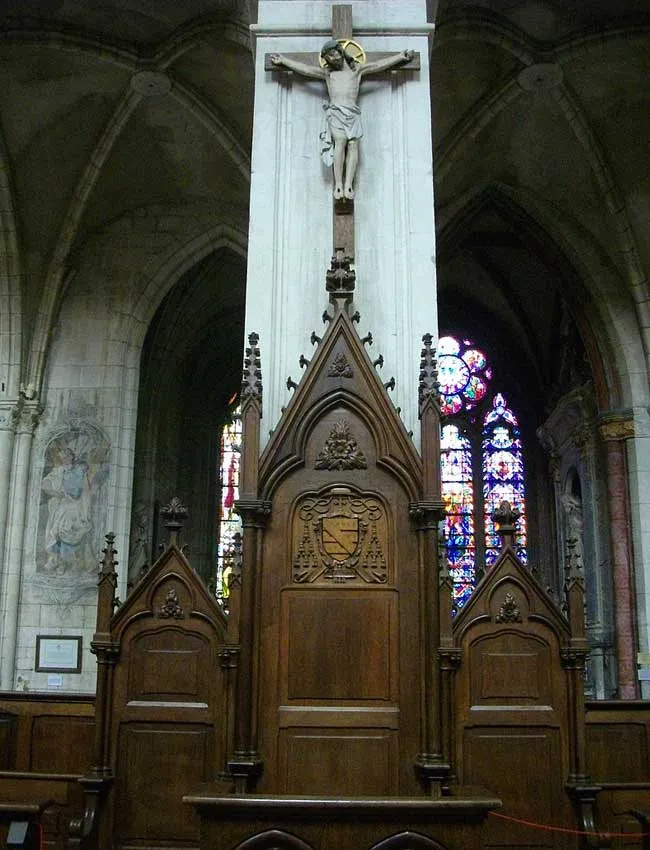
The cathedral is 94 m long. It is 12.4 m wide at the level of the nave and 37 m at the level of the transepts. The vault is located 18.5 m high. The nave of eight spans with collaterals has nine Gothic chapels on its sides. The nave is Romanesque but the vaults are Gothic. The western choir or old choir has a flat apse while the eastern choir or new choir has an apse seven-sided.
The Chapel of the Rosary was built from 1505 to 1515 by the architect Nicolas Masson in a flamboyant Gothic style. It is one of the last to be erected, and it is adorned with several sculptures. The Baroque altar is surmounted by a Pietà made by the Nancy sculptor Joseph Jonkher around 1774. The chapel is enclosed by a 19th century wrought iron gate, inspired by the gates of the choir of Notre-Dame de Paris cathedral. This grid has been classified as a historical monument object on May 2, 1989.

Furniture
The baldachin installed at the intersection of the transept and the eastern choir 11 is a reduced replica of that of Saint Peter’s Basilica in Rome. Sculpted by Canon Chaligny de Plaine in 1760, it is made of marble, stucco, gilded wood and iron work. The balustrade of the choir is inspired by that of the Luxembourg Gardens in Paris. The whole must capture the viewer’s gaze on a symbol of Baroque art and make people forget the medieval image of the cathedral.
The preaching pulpit dates from 1760, replacing the one that disappeared in the fire of 1755. Sculpted in oak wood, it is the work of Charpentier, a pupil of the Toulouse sculptor Lacour. The motifs of the staircase banister illustrate the parable of the sower, the Sermon on the Mount and the prophecy of Isaiah on the ascent of peoples to heaven.
The stalls of the eastern choir also date from 1760 and are the work of the Toulouse sculptor Lacour. Located in a cathedral, they include the bishop’s throne, in the center of the hemicycle, with the places of the canons on either side. The numerous decorations refer to the Holy Scriptures. The stalls were sheltered during the First World War, then restored.
The cathedral houses the reliquary shrine of Saint Saintin. The latter evangelized the city of Verdun in the 4th century. Returning to Meaux to take care of his religious community, his body was repatriated in 1032 to the Abbey of Saint-Vanne in Verdun. During the Revolution of 1789, the relics were hidden in the tomb of Bishop de Nicolai. In 1804, Bishop d’Osmond, bishop of Nancy-Toul administering the diocese of Verdun, had these relics placed in a reliquary shrine.
The reliquary of the Holy Veil contains a relic taken from the veil of the Virgin, treasure of the Cathedral of Notre-Dame de Chartres. The relic is given to Verdun on October 20, 1933 by Bishop Harsconet, Bishop of Chartres. The reliquary is a bronze sculpture, gilded with mercury nitrate, made in 1933 by the sculptor Henri Bouchard and the goldsmith Brunet. It represents Our Lady of Verdun, carrying in her hand a glass tube containing the relic, and enthroned on the cathedral as it was before the fire of 1755.
The Fulda Sacramentary (10th century) was kept in the treasury of Verdun Cathedral until the 18th century, when it entered the collections of the Mannheim court library, which was transferred to Munich in 1803 −1804. The Sacramentary of the Church of Verdun (11th century) probably passed to the use of the Cathedral of Notre-Dame de Verdun in the course of the 12th century.
Stained Glass
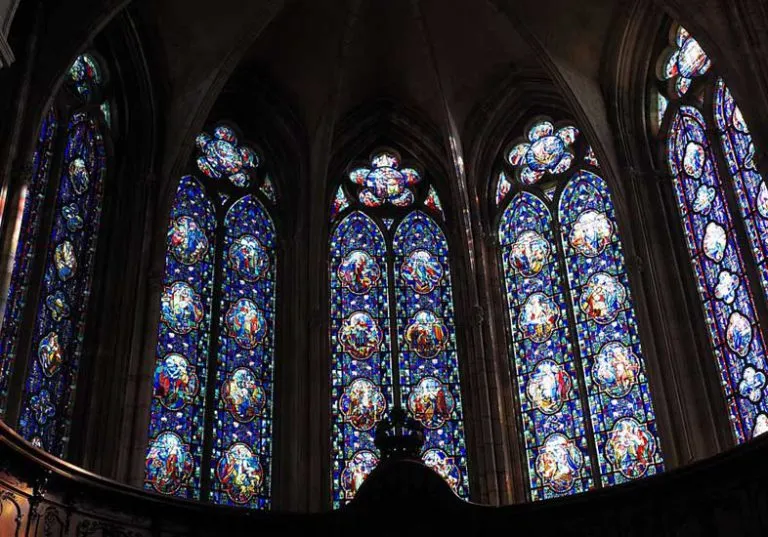
The stained glass windows of the cathedral were made by the master glassmaker from Nancy Jean-Jacques Grüber, to replace those pulverized by the German bombardments of the First World War. A stained glass window located in the western transept and made from 1927 to 1934, illustrates the consecration of the cathedral by Pope Eugene III on November 11, 1147.
Crypt
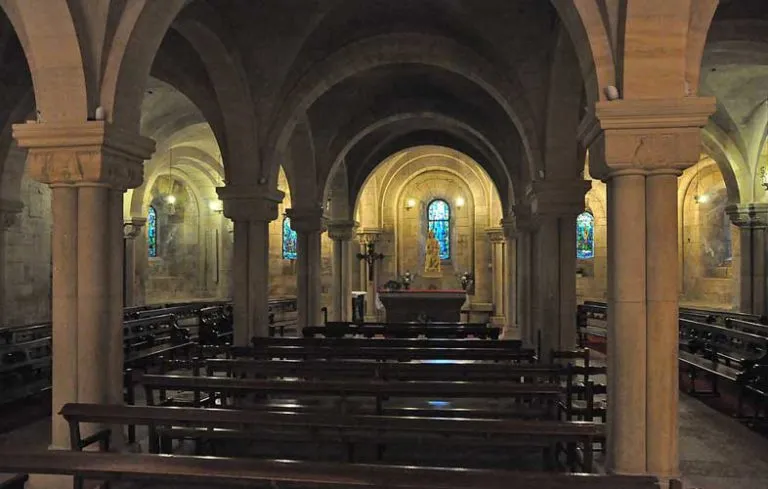
The crypt was built in the 12th century by the architect Garin, to the east of building. It is made up of a central crypt hall and two lateral annex crypts serving as access. It was filled in after the fire of 1755, and was rediscovered after the First World War thanks to German bombardments. It was restored by the architects A. Ventre and M. Delangle. In 1935, the sculptor Gaston Le Bourgeois made the capitals of the 13 pillars of the crypt. The sculptures depict scenes from the religious life of the city and the Battle of Verdun in 1916.
The statue of the Virgin was sculpted by Bouchard in 1932. The vaults, walls and transverse arches of the south wing of the crypt are painted with 15th century frescoes. These depict religious subjects such as the Annunciation, the Presentation of Jesus in the Temple, the Nativity, the Visitation of the Virgin Mary and the Day of Judgment. The Resurrection is told in eight small tableaux painted on a transverse arch.
Organs
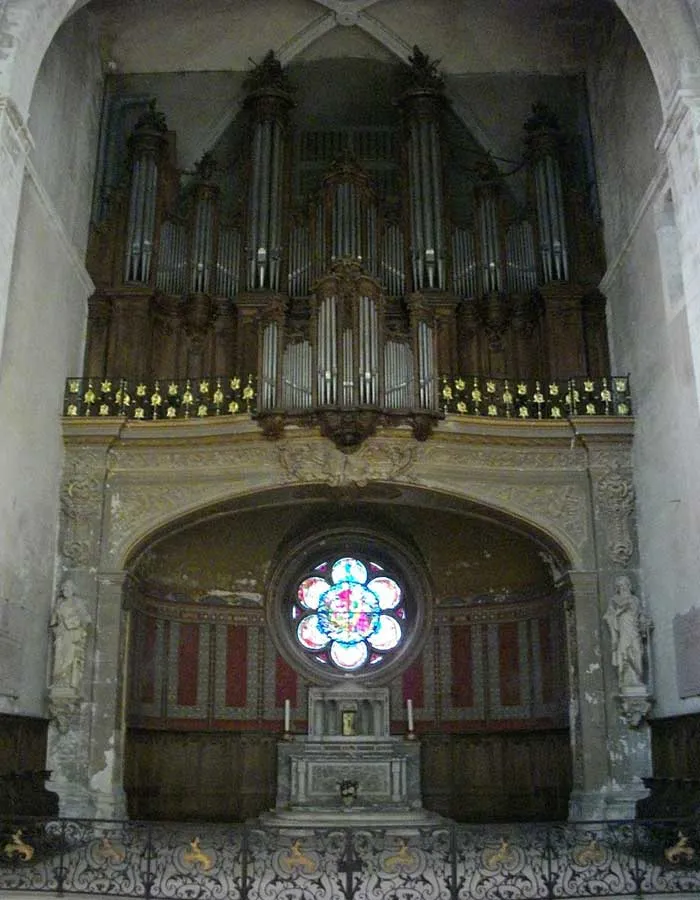
The gallery organ was built from 1762 by the Nancy organ builder Nicolas Dupont, following the great fire of 1755. It has a Louis XV style case with a large organ with 6 turrets measuring 12 m in height, wide by 10 m high, and a positive with 4 turrets 3.5 m wide by 3 m high. It was installed in 1766 in the south brace and has 44 stops spread over 4, 61-note manuals and a pedal board. He was saved from the Revolution of 1789 by the organist Spery. It experienced slight changes by Jean-Baptiste Gavot in 1829 and Jean-Nicolas Jeanpierre in 1868.
In 1898, the instrument was transformed into a romantic organ by the Jacquot-Lavergne company of Ramber villers (Vosges). It’s down to just three keyboards but now features 54 stops, an electric blower, and an all-new expressive narrative. The organ is inaugurated on March 25, 1898.
During the First World War, the organ was damaged by a hasty dismantling in the spring of 1918: the mechanics were damaged and the large pipes were flattened for logistical reasons. The instrument is stored in the carmel of Domrémy-la-Pucelle (Vosges). Repatriated in 1919 in the nave of the cathedral, it was exposed to the natural elements which eventually rendered it unusable.
July 28, 1932, Jacquot & Fils received an order for a new organ, retaining the 18th century case. The instrument has 64 stops spread over four 61-note manuals and a 32-note pedal board, and has 4,800 pipes. Assembly and restoration work began in march 1934 and the instrument is received on February 1, 1935. It is inaugurated on November 10, 1935 by composer Marcel Dupré and titular organist Pierre Camonin.
The organ suffered further damage during World War II. Thus, a restoration program is approved on May 13, 1958. Jacquot-Lavergne is carrying out the work. The new instrument was again inaugurated by Marcel Dupré on November 11, 1958.
The organ case is listed as a historical monument object on March 28, 1980.
In 1976, a period of drought made the organ unusable. In 1986, work was entrusted to Gonzalez, which notably installed a new console. The instrument is inaugurated on March 19, 1987 by the organist Marie-Claire Alain. In 1999, an electronic combiner was installed.
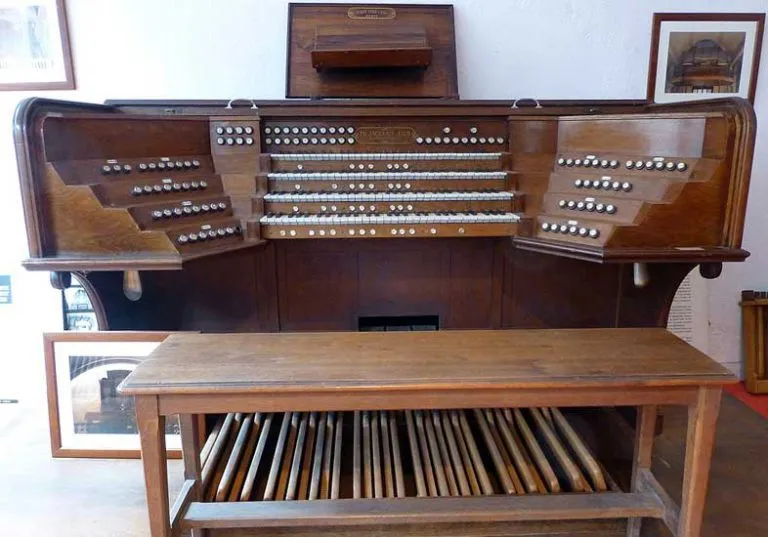
Bells
Notre-Dame de Verdun cathedral houses in its two towers no less than nineteen bells, cast between 1756 and 1955. Sixteen of these bells, covering exactly two octaves, can ring in flight and as such constitute the second most from France, behind that of Strasbourg Cathedral (sixteen bells covering two and a half octaves, since 2014) and in front of the ringtone of Avignon Cathedral (fifteen bells).
The two large drones, sounding in G 2 and A 2, date from 1756 and were cast by the Lorraine founder Pierre Guillemin. These are the only bells in the cathedral left in place during the French Revolution.
Between 1874 and 1899, fourteen additional bells were cast by the Farnier-Bulteaux foundry in Mont-devant-Sassey. The D 4 bell, damaged in 1945, was recast in 1955. The C 3 bell, cracked for many years, was repaired in 2010.
Feast Day - 21st July
Annual Feast Day of Our Lady of Verdun (Notre-Dame-de-Verdun), Lorraine, France celebrated on 21st July.
Church Visiting Time
Contact Info
7, Place Monseigneur Ginisty,
55100, Verdun, Lorraine, France.
Phone No.
Tel : +33 3 29 86 07 68
Accommodations
How to reach the Cathedral
Metz–Nancy–Lorraine Airport in Lorraine région of France. It is located in Goin, 16.5 km southeast of Metz, and north of Nancy is the nearby Airport to the Cathedral.
Verdun Train Station in Verdun, France is the nearby Train Station to the Cathedral.

